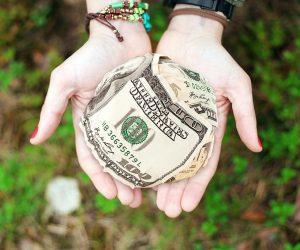We thought Sarah’s Qgiv blog post about how to create a beautiful donation confirmation page was great, and we wanted to follow up that post with some best practices on how to convert your new donors into part of your fundraising base.
A large percentage of donations come from new, small donors, especially when you’re running a peer-to-peer fundraising campaign. The exciting next step is nudging those small donors and first-time donors to be part of your base. This isn’t easy and can take time, but there are some simple and quick techniques and tools that can help facilitate this important process. One of those strategies is a New Donor welcome series.
New donor welcome series
One of the best ways to turn your new donors into strong supporters is by engaging them with digital content that is relevant and personal. Since you probably don’t have time to call or write to each donor individually, using a scale-able strategy that allows for personalized content is the key.
First, it’s important to understand what your ultimate goal is so you can test and measure your methods. The goal can vary by organization or time of year. Your goal may be to generate a repeat donation or get a small donor to volunteer, or it might just be to get the new donor to follow your Facebook page or interact on social media. For this post, we’re going to use a repeat donation as our goal, but the outreach strategy can apply to many of the typical nonprofit goals.
Email one
Thank your donor for their recent contribution (you can use this first email as your thank-you note if you want, or you can trigger it to go out 24 hours after the donation was made). You should reference the amount your donor gave you and explicitly state how that money will impact the people or cause your organization supports. If you use Qgiv restrictions on your fundraising form, you can dynamically populate the restriction in the email so that your donor knows their gift is going to the right place within your organization. Finally, make a small ask at the end of your first email to maximize its impact. For example, this can be to follow you on social media or subscribe to your blog.
Email two
In the second email, you should take the opportunity to engage your supporters about the issues that are most important to them. Ask your supporters what might motivate them to interact with your organization again. You can give a couple sentences on what the organization is currently most focused on, but what you want to determine from this email is what will motivate your new donor to give again. Typically, this email will include a few buttons that you think are likely to be motivators, and then to include more options and information on a more extensive preferences page.
Email three
The third email should be focused on the issue that inspired your supporter to give. This may sound difficult, but your email platform should allow you to write the content for each issue once, and then send it to those who’ve selected that issue as their motivator. Focusing on that motivator is one of the ways you can start to build a relationship with each donor that is relevant and personal.
Email four
The fourth email is your call to action email. Again, it is always better to have some relevant content about each person’s motivating issue (which should be easy to do) and then discuss how their contribution will impact that issue. Rather than talk about how their donation will let you do something, specifically talk about how their money will help or improve the cause. For example, “every donation of $50 will give 25 turtles a more sustainable home.” Your call to action should be simple. Give a suggested amount or a donate button. Giving multiple amounts for your reader to choose from is okay, but don’t give multiple calls to action (e.g. Volunteer Now & Donate Now). There should be one action you’re pushing for; too many calls to action can be overwhelming. You’ve been building up to this action over the first three emails. Giving too many options for action will distract from what your organization truly needs at that moment.
Final thoughts
Building a strong donor base is one of the most important things nonprofit organizations focus on. Without a base of financial support you wouldn’t be able to do the important work you live for. Using tools that are built to help you be targeted and personal can transform a painful segmentation and communication strategy into a fun and rewarding process.
Emails are a huge part of most nonprofits’ fundraising and donor retention efforts. That’s why Daniel Esrig of Klaviyo, a data-powered email platform based in Boston, is passionate about helping nonprofits make the most of their email strategies. Klaviyo has even worked with us to build an integration between our platform and theirs! Daniel has a ton of great insight into how nonprofits can use email sequences to retain donors and keep them involved in the future.
Note for Qgiv users: The new donor welcome series is just one of the many features you’ll have complete access to when you integrate your Qgiv and Klaviyo accounts. Don’t let your email platform be the limiting factor for how personal, engaging or successful your email strategy is. For more information on how to get started visit the Klaviyo & Qgiv integration page and feel free to request a demo. We’ll get in touch with you right away!








